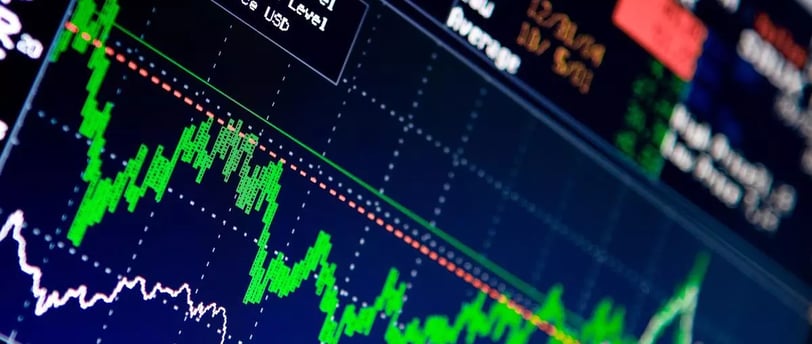Add your promotional text...
Market Meltdown Friday: Analyzing the 1% Slide in Sensex and Nifty Amid Global and Domestic Woes
Synopsis: The Indian equity markets experienced a dramatic downturn, with benchmark indices Sensex and Nifty falling over 1% due to weak global cues, surging inflation, and uncertainty surrounding China's economic stimulus measures. Sectors such as banking, auto, and metals bore the brunt, signaling a volatile market outlook.
MARKETSINDIA
By Sameer Malhotra
12/13/20243 min read


Indian Equity Markets: A Tumultuous End to the Week
The Indian stock markets experienced a sharp sell-off on Friday, marking a turbulent end to the trading week. The benchmark indices, Sensex and Nifty plunged over 1%, driven by a combination of domestic and global concerns.
At 10:35 am IST, the Sensex tumbled by 1,147 points (1.41%), closing at 80,142, while the Nifty50 declined by 337 points (1.37%), ending at 24,211. The market slide was fueled by weak global cues, higher-than-expected domestic inflation, and lingering uncertainty around China’s economic stimulus measures.
Impact of the Sell-Off
This steep decline wiped out a staggering ₹6.5 lakh crore from the total market capitalization of companies listed on the Bombay Stock Exchange (BSE), which now stands at ₹451.65 lakh crore.
Heightened investor anxiety was evident as India VIX, the volatility index, surged 9.9% to 14.5. This spike underscores the prevailing nervousness and uncertainty among market participants.
Sectoral Carnage: Interest Rate-Sensitive Sectors Lead the Decline
Several sectors bore the brunt of Friday’s sell-off, with interest rate-sensitive industries such as banking, financial services, auto, and real estate witnessing sharp declines.
Nifty Bank, Auto, Financial Services, PSU Bank, and Realty indices saw losses ranging from 1.5% to 2.7%.
Investors exited positions, reflecting concerns over the broader economic implications of rising inflation and weak global growth prospects.
China’s Stimulus Ambiguity: A Drag on Metal Stocks
Nifty Metal Index was the worst-performing sector of the day, plummeting by 5%. Key metal stocks, including Steel Authority of India (SAIL), NMDC, Tata Steel, and JSW Steel, recorded significant losses, with declines ranging from 2% to 4%.
The uncertainty surrounding China’s economic stimulus measures was the primary trigger for this sectoral decline. While China has hinted at potential steps like interest rate cuts and adjustments to banks’ reserve requirements, the lack of specificity regarding the timing and scope of these measures has rattled global markets.
According to Gaurang Shah, Head Investment Strategist at Geojit Financial Services, “The metal rally seen after China’s initial stimulus announcements in September has fizzled out as the broader market sentiment remains weak.”
Rising Inflation: A Looming Threat
India's retail inflation eased to 5.48% in November, staying within the Reserve Bank of India’s (RBI) target range. However, a closer look reveals alarming trends:
Rural inflation surged to 9.10%, up from 6.68% in October.
Urban inflation increased to 8.74%, compared to 5.62% in the previous month.
The disproportionate rise in rural inflation has raised concerns about its potential impact on monetary policy decisions. Higher inflation could delay the RBI’s anticipated rate cuts, leaving investors in a precarious position.
The Dollar’s Strength: Adding Fuel to the Fire
The strengthening US dollar added another layer of complexity for Indian markets. The dollar index rose by 0.13% to 107.1, making emerging markets like India less attractive for foreign investors.
A stronger dollar not only raises the cost of foreign debt but also increases the risk of imported inflation, creating additional headwinds for the economy.
Dr. V.K. Vijayakumar, Chief Investment Strategist at Geojit Financial Services, remarked, “The rising dollar is a concern since it can lead to imported inflation.”
Looking Ahead: What Lies on the Horizon?
The road ahead for Indian markets remains challenging. The interplay of global uncertainties, domestic inflation concerns, and subdued metal demand has created an environment rife with volatility.
Key factors to watch include:
China’s economic policies: Clear and impactful stimulus measures could restore some market confidence.
RBI’s monetary stance: Any signals regarding interest rate adjustments will be closely monitored.
Global market trends: Broader movements in the US dollar and crude oil prices will continue to influence market sentiment.
According to Jeff Ng, Head of Asia Macro Strategy at Sumitomo Mitsui Banking Corporation, “Investor confidence may only return with tangible stimulus measures from China and a clear signal from the RBI on interest rates.”
A Cautionary Outlook
As the Indian equity markets grapple with heightened volatility, cautious optimism prevails. While opportunities may arise in specific sectors, investors are advised to tread carefully, keeping an eye on both domestic and global developments.
The current landscape serves as a reminder of the intricate interplay between local and global factors, emphasizing the importance of a well-informed and diversified investment strategy.
